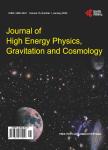Quantum Cosmological Tetration of Time
Quantum Cosmological Tetration of Time作者机构:Kilbrandon House PA34 UK
出 版 物:《Journal of High Energy Physics, Gravitation and Cosmology》 (高能物理(英文))
年 卷 期:2020年第6卷第2期
页 面:225-237页
学科分类:07[理学] 070201[理学-理论物理] 0702[理学-物理学]
主 题:Cosmology Quantum Information Quantum Gravity Complexity Graphiverse
摘 要:In an original quantum cosmology model, the scale factor evolution describing Hubble expansion is solely determined by the third tetration of time. The model exhibits early accelerating expansion, mid-time decelerating expansion, and late accelerating expansion. The substrate of reality, coined the “Graphiverse, is a quantum-classical information processing network, represented by a learning deep generative graph. It comprises two complementary sub-graphs which are the substrates of a perceived rendering and a dark rendering of the emergent physical universe. Four temporal registers that count change (i.e. dimensions of time) are defined: system time, classical complexity time, quantum-classical correlation (or discord) time, and quantum coherence time. The cosmological scale factor evolves through a right-associative iterative exponentiation of these times. In the first (right) exponentiation, quantum-classical correlation (or discord) time is the base and its exponent is quantum coherence time. In the second (left) exponentiation, classical complexity time is the base and its exponent is the first (right) exponentiation. The four temporal registers that count change self-synchronize and equalize the four dimensions of time. The model provides a nexus for a new discussion about time and quantum gravity.



